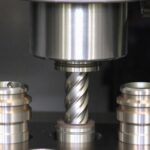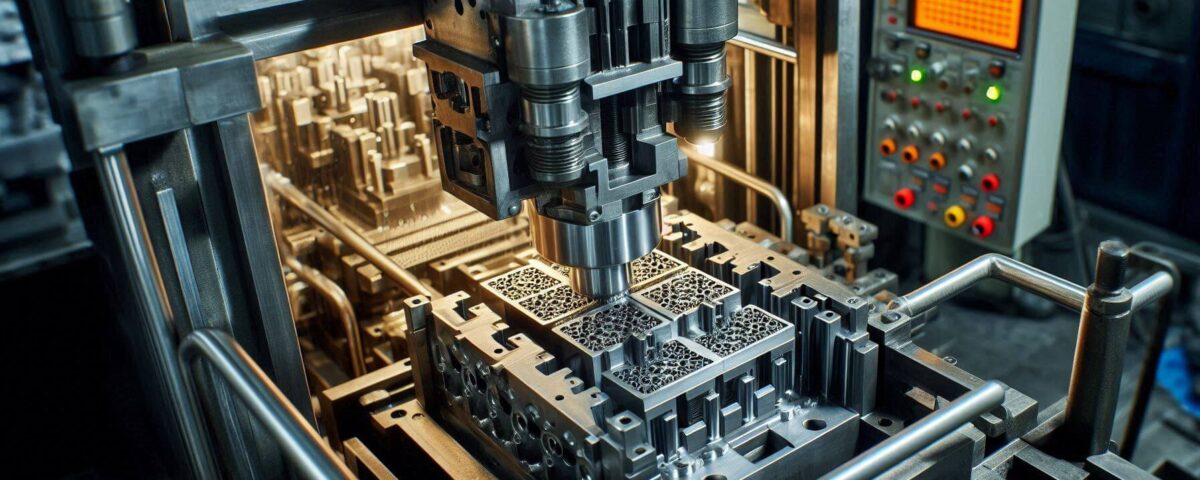
Methods for Addressing Burrs After Machining Processes
30 October 2024
Understanding the Drilling Operations in CNC Manufacturing
6 November 2024What is Die Casting?
Innovation, cost-effectiveness, and efficiency are critical in the cutthroat car manufacturing industry. Manufacturers are using new manufacturing techniques to suit the growing consumer demand for automobiles that are lightweight, fuel-efficient, and high-performance. Die casting is one such method that has revolutionized the production of automobiles. Die casting contributes to the continuous development of the industry by facilitating the quick manufacturing of robust, intricate, and lightweight components while providing quality and consistency on a large scale. This article examines how die casting is revolutionizing the automotive industry and propelling advancements in the design and production of automobiles.
Melted metal, usually zinc or aluminum, is poured under high pressure into a steel mold cavity during the die casting process. Because this mold, also known as a "die," is made specifically for each part, it is possible to create detailed designs and complex shapes that would be challenging to do with conventional production methods. Die casting is perfect for automotive parts that need strength, accuracy, and lightweight qualities because it makes it possible to produce high-precision parts with consistent quality.
Why Die Casting is Perfect for Automotive Manufacturing
Manufacturing procedures are subject to strict requirements from the automotive sector. To promote fuel efficiency, parts must be as lightweight as possible while withstanding harsh circumstances including high temperatures, stress, and corrosion. Die casting's special benefits allow it to satisfy these requirements:
Precision and Consistency
Parts with complex shapes and precise tolerances can be produced because to die casting's high levels of accuracy. This involves complying with the precise requirements for safety-critical equipment such as engine parts, gearbox casings, and structural elements for manufacturers.
Cost-Effectiveness for High Volumes
Die casting is very cost-effective for mass manufacturing because, once the mold is made, it can generate huge quantities of parts at a cheap cost per unit. In the automobile sector, where producers must strike a balance between quality and cost-effectiveness, this cost-effectiveness is crucial.
Lightweight Material Options
Die casting makes it possible to create lighter parts without sacrificing strength by using magnesium and aluminum. Improved fuel efficiency is a major objective for automakers as they work to lower emissions and satisfy legal requirements, and lightweight components directly contribute to this goal.
Key Automotive Parts Made with Die Casting
Die casting is used extensively in automotive manufacturing, producing a wide array of parts. Some of the most common include:
- Engine Blocks: Compared to conventional cast iron blocks, die-cast aluminum engine blocks are lighter while yet providing the strength required for high-performance engines.
- Transmission Housings: Tight tolerances made possible by precision die casting guarantee that transmission housings fit precisely and operate seamlessly inside the drivetrain system.
- Cylinder Heads: Die-cast cylinder heads, which are made of aluminum, improve fuel combustion efficiency and airflow management to maximize engine performance.
- Suspension Components: By lowering the vehicle's total weight, lightweight die-cast suspension components enhance handling and fuel economy.
- Structural Components: Die casting creates a variety of structural components that offer strength, durability, and impact resistance, ranging from shock towers to battery casings in electric automobiles.
How Die Casting Supports Lightweight Vehicle Design
Die casting's ability to assist lightweight vehicle design is among its most important benefits in the automotive sector. Reducing vehicle weight has become a primary concern for automakers as they look to increase fuel efficiency and lower emissions. Die-cast components made of aluminum and magnesium are perfect for lowering the total mass of a vehicle because they are substantially lighter than their steel equivalents.
Fuel efficiency and range are directly enhanced by lightweight components in electric vehicles (EVs). For structural frames and EV battery enclosures, automakers can use die-cast aluminum to deliver the required strength without needlessly increasing weight. As the popularity of electric vehicles continues to rise and manufacturers strive to improve battery efficiency and longevity, this feature is crucial.
Enabling Electric Vehicle Innovation
In the design and production of electric cars, die casting is crucial. Die casting provides the strength and accuracy needed for intricate components like battery enclosures, motor housings, and inverters that must endure high operating temperatures and vibrations. Complex, multipurpose shapes can also be created with this technology, giving manufacturers the ability to produce parts that combine several uses into one unit. Because of this integration, fewer parts are required, simplifying the design and possibly lowering costs.
Furthermore, die casting helps EVs manage their heat. The production of thin-walled, heat-dissipating components aids in controlling battery and power system temperatures, which is essential for EV safety and performance.
Sustainability and Efficiency in Production
Die casting provides a number of environmentally beneficial benefits as the automobile sector strives for sustainability. Die-cast components are recyclable and the process generates little waste, both of which support the environmental reduction objectives of automakers. Reusing scrap metal is another common practice in die-casting, which further lowers waste and resource usage. Die casting is a crucial technology as producers look for more environmentally friendly production techniques because of its capacity to create recyclable, eco-friendly parts.
Conclusion
Die casting has established itself as a key component in the automobile sector, enabling the production of intricate, robust, and lightweight components that satisfy the high demands of the modern world. Die casting will remain essential in fostering efficiency and creativity as automotive technology develops, especially with the growing popularity of electric vehicles. In addition to changing the way cars are made, die casting is opening the door for a more environmentally friendly automotive future by having the ability to increase fuel economy, cut emissions, and lower production costs.




